A Week in the Bush Vol. 438
on Nov 30, 2022A magnificent week began with a massive pack of wild dogs that had a very successful in their hunts, providing for all members. With so many mouths to feed, there is massive pressure on adults to produce meals for all. On one afternoon drive, they made not less than 3 impala kills, providing some very special memories for our guests.
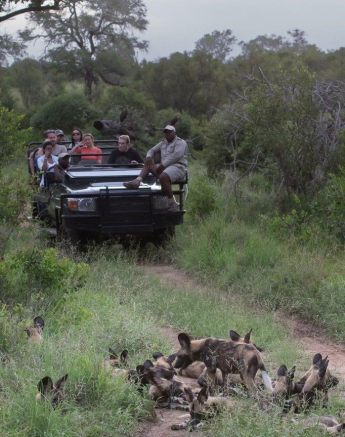
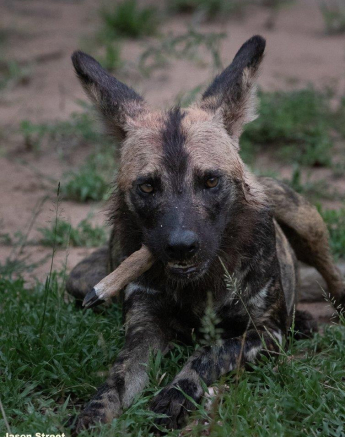
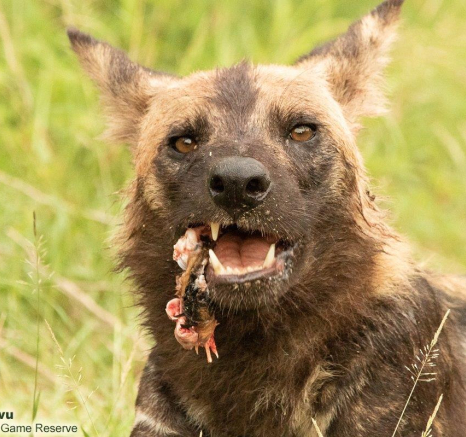
When going out on safari, it is not always about what you see, but what you hear as well. This morning we heard some Blue wildebeest making an alarm call, and Guide Creamson decided to investigate. Following up on blue wildebeest alarm calls can sometimes lead to nothing as they are extremely nervous animals and will call for anything. But then Vervet monkeys also started alarm calling, putting a bit more hope in the alarm calls. Slowly scanning the wide-open areas for any signs of predators, they saw something walking in the far distance. As they got closer, they were surprised by a male cheetah strolling in the road.
It is getting hotter by the minute, and the cheetah took cover under some shade. Between his short naps, he scanned the area for any potential prey or other predators that might be around.
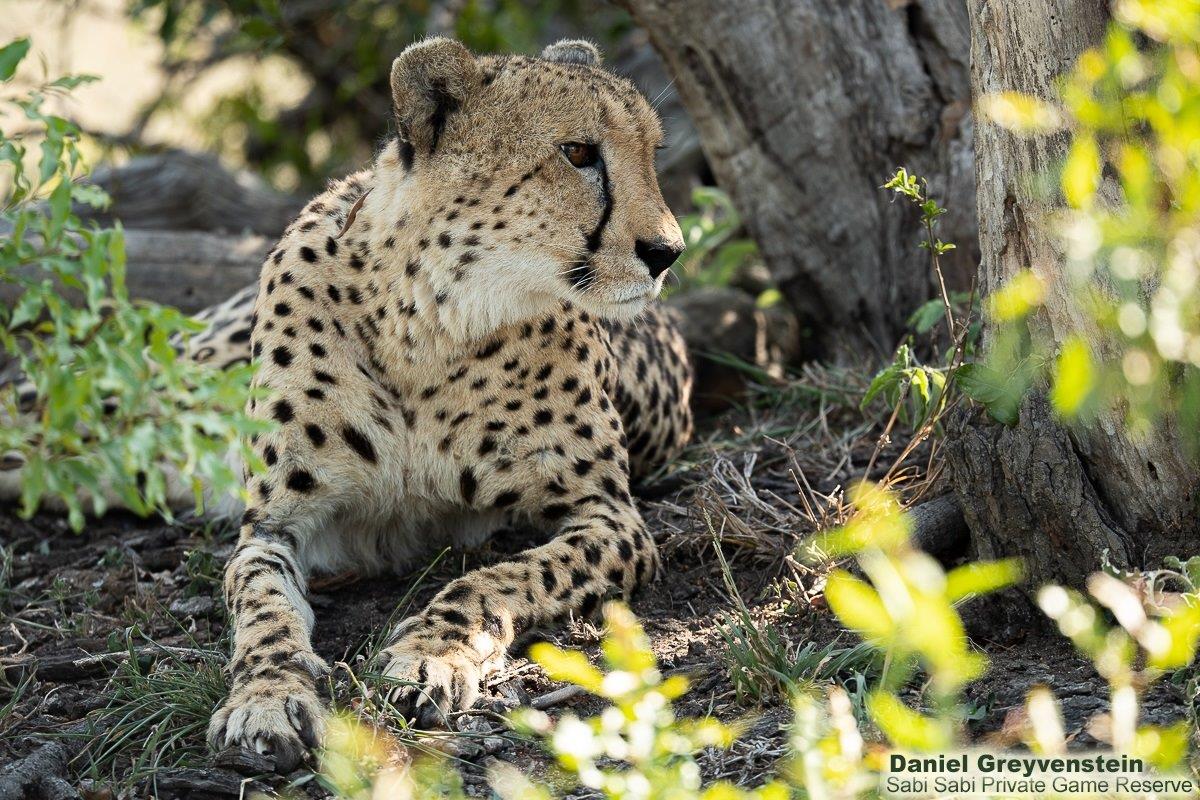
Golonyi took to a large termite mound to look out into the plains while the sun set, taking note of all the activity around her. A large elephant bull feeding just to the west with the sun setting behind him; a bachelor herd of impala to the north of her; but as the sun sank into the horizon a duiker caught her attention in a far-off thicket. Golonyi quickly sprang into action and moved purposefully towards the thicket. The elements were not in her favour on this occasion and the duiker ran off to live another day.
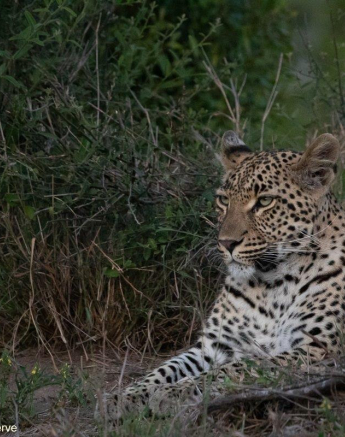
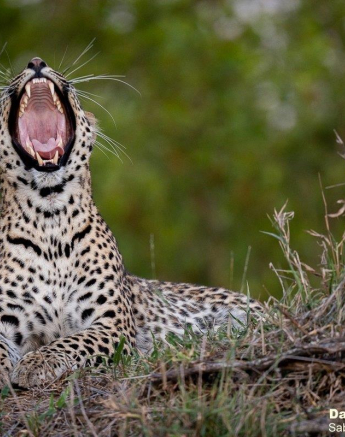
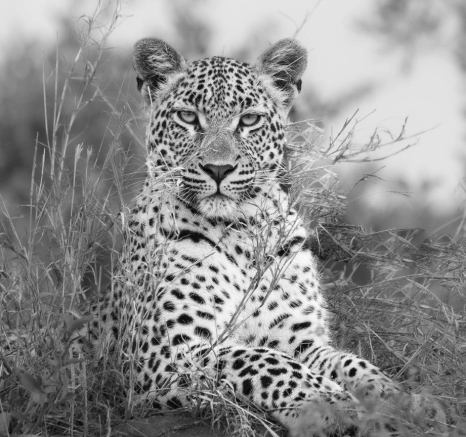
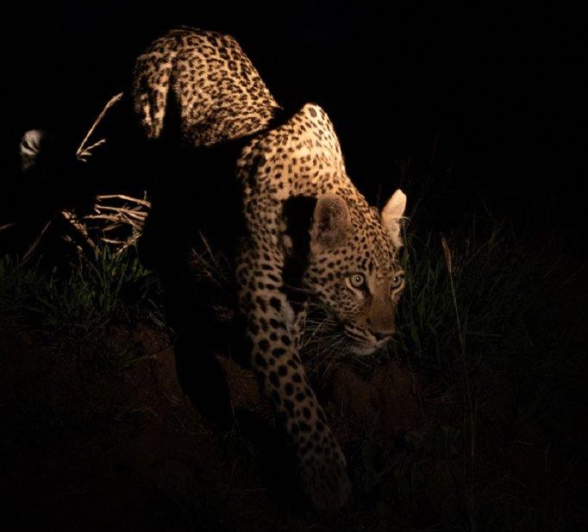
During the day, in between safari, Golonyi was found in a tree with a kill. First thing during the afternoon safari, we followed up on where we last saw her. Returning to the last location, both Golonyi and her kill were gone. We presume she dropped the kill on the ground and hyenas stole what was left of it. We drove around the area, searching for any signs that might indicate that she is still close by. Patience is key, and it definitely paid off. We found her walking on the road, not too far from where she was last seen. Unfortunately, having lost her first kill, we could see that she is searching for any other prey around. We left her resting on a termite mound in the hopes that she would find something to hunt during the night.
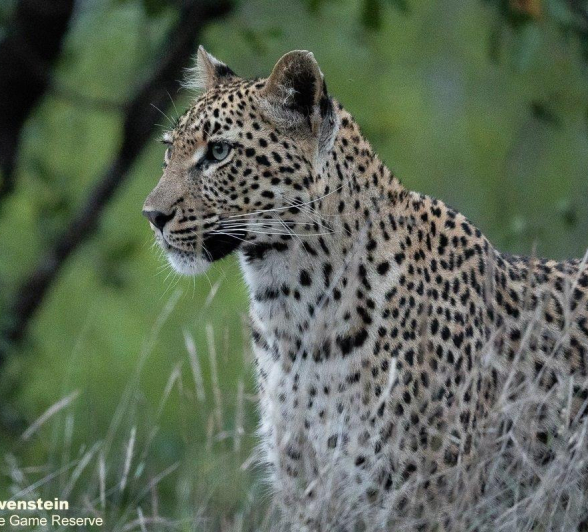
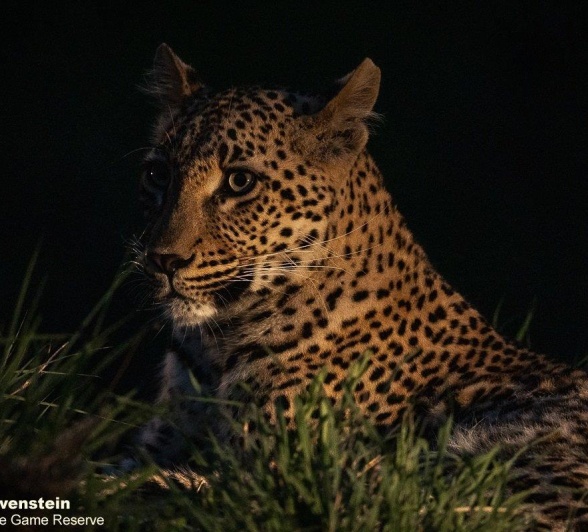
Ntsumi and her cub were feasting on a baby warthog during a morning safari. We decided to go back in the afternoon to see if they were still there. Not too far from where they were left in the morning, we found Ntsumi wandering around. All of the sudden her posture changed, and she started stalking something. She quickly dashed into a thicket where we lost sight of her. Hoping that she was successful, we made our way around the thicket. There she was, with a baby impala in her mouth.
Following her to a big Marula tree, she hoisted the kill up into the tree, taking a second to catch her breath. She came back down, walking in the direction where the cub was last seen, but took another break on a tree stump, before continuing her search for her cub. After a few minutes, she got back up and walked with purpose. Not too far from the kill that she just made, we found the cub, and she took him back to the kill.
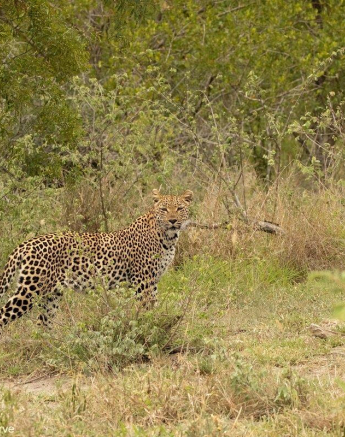
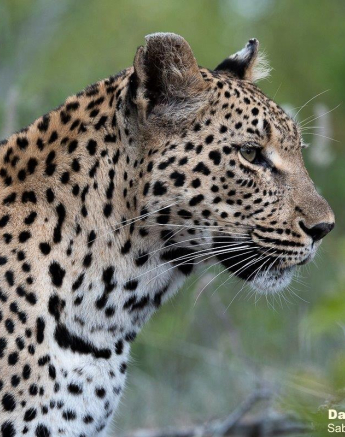
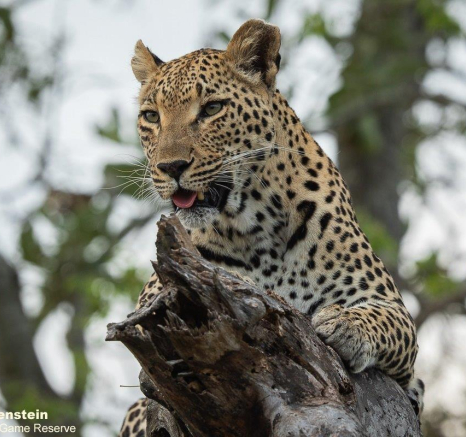
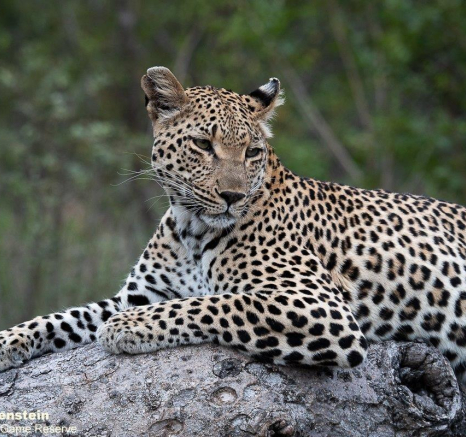
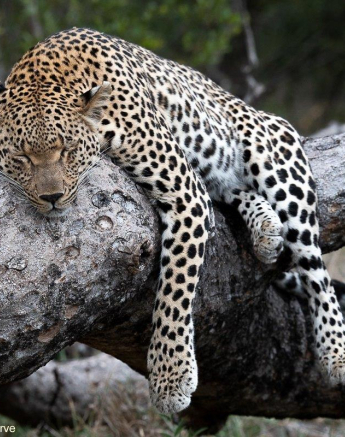
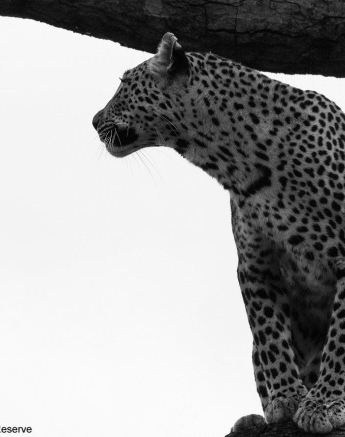
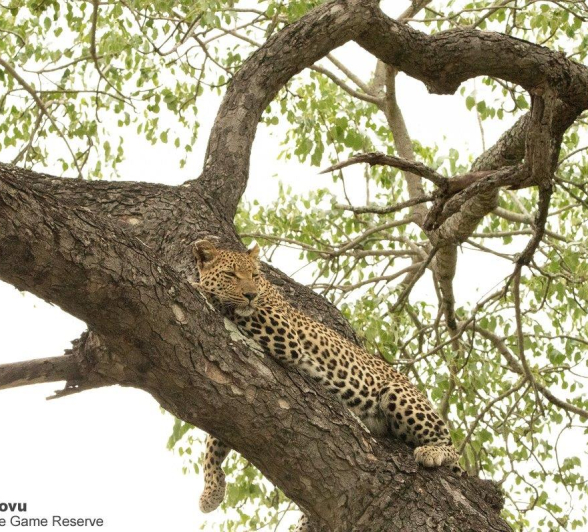
This N'waswishaka male spent a very hot day alone in the shade but as the sun set it was time for him to call out and locate his brothers. The lion’s roar is an iconic African sound and in the dark of night it leaves you with goosebumps all over your body and you know why the lion is king.
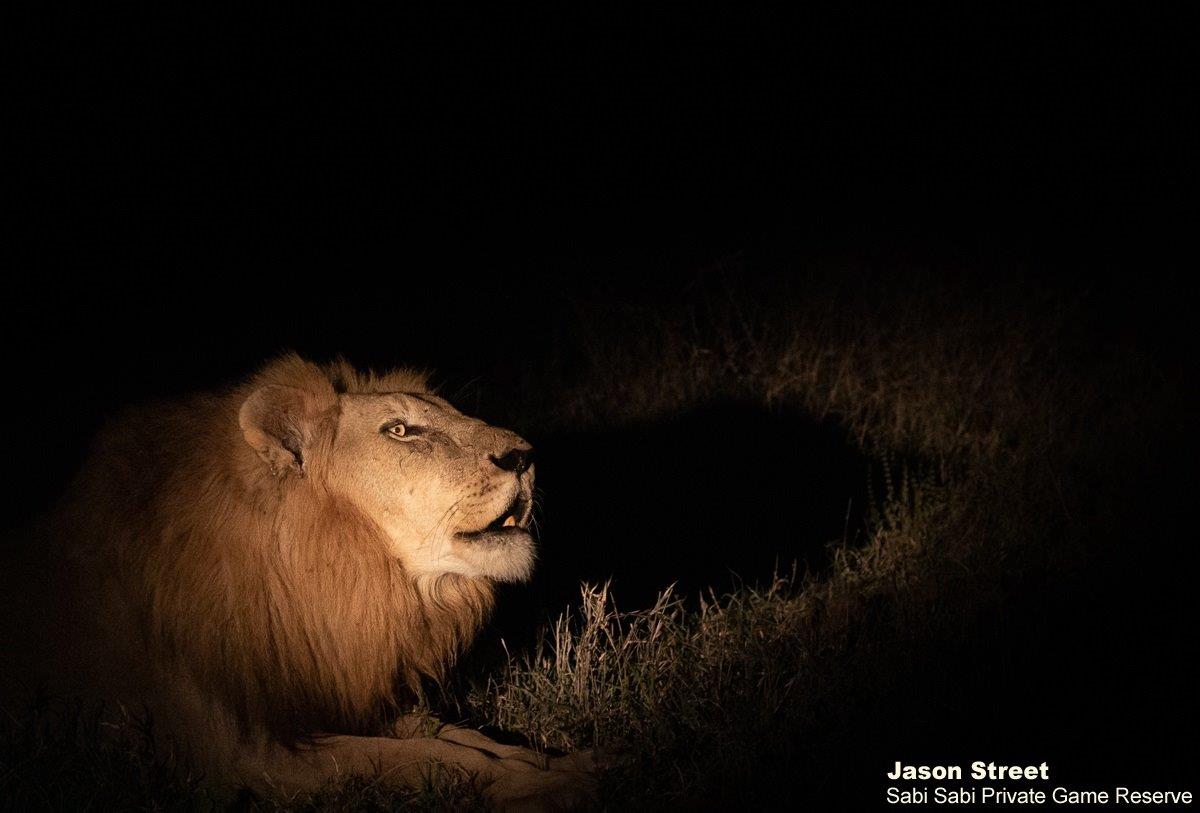
Witnessing the Styx Pride moving silently through the darkness in search of a meal is a surreal experience. When following the pride through the darkness it gives you the feeling of being part of the pride, a team member among these Apex predators. Lions just have a different confidence when moving at night, it is a privilege to be "part of the pride". We eventually left the pride to get to business and we returned to the lodge for dinner. We again tied up with the Styx Pride in the morning with them all looking content and well fed.
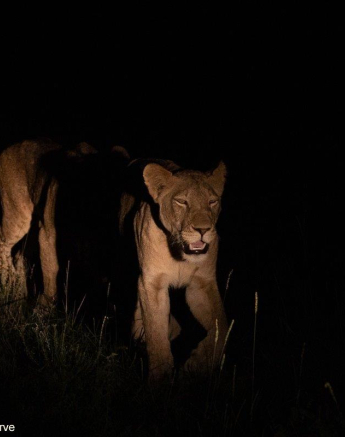
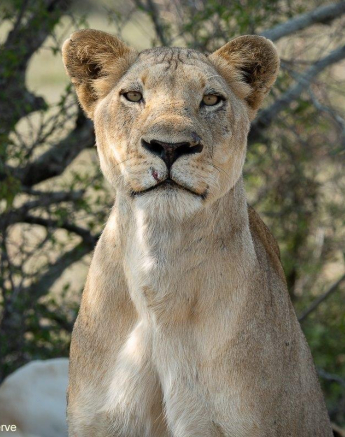
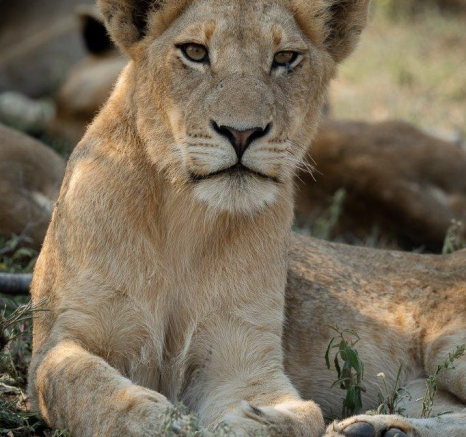
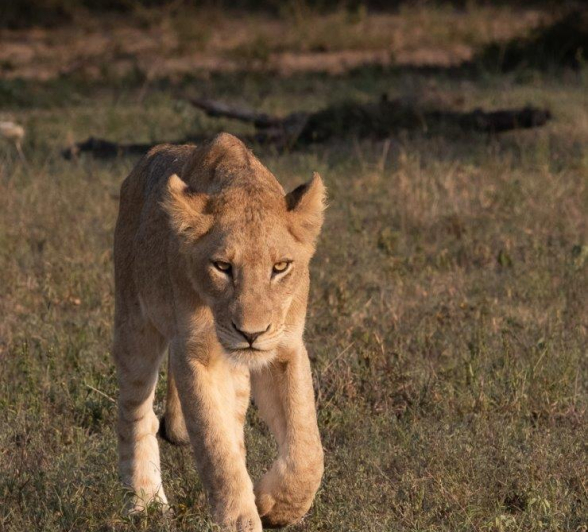
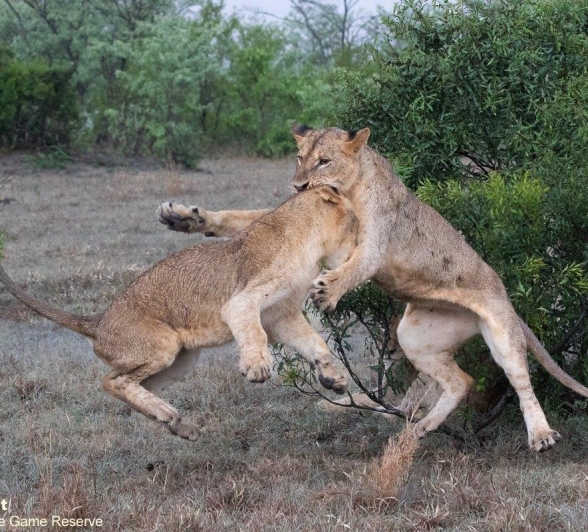
As the name suggests, the Black-crowned Night Heron is primarily a nocturnal species. Being nocturnal it does not need to compete with the many diurnal bird species that forage along water courses. They have a diverse diet including fish, amphibians, reptiles, birds, small mammals, insects, molluscs, and spiders.
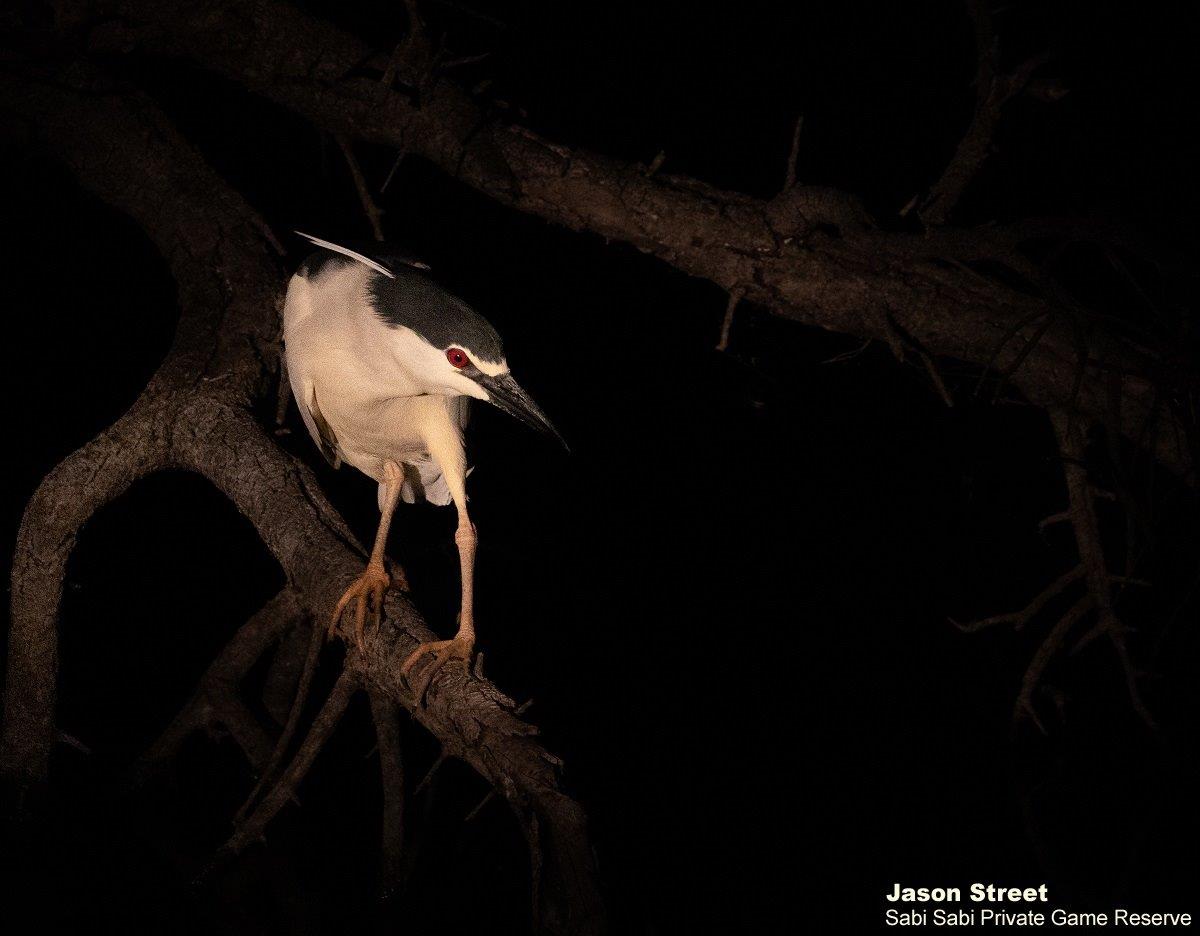
Seeing a Chameleon in daylight is quite exciting. This Chameleon was busy crossing the road when we came closer. Mimicking the movement of a leaf in a breeze, he jerked back and forward while carefully placing one foot in front of the other. His eyes moving independently from one another to look out for any danger while he is out in the open. When we stopped to view him, he crossed the road and immediately took on a darker colour of green to camouflage with the grass as he made his way to a nearby tree.
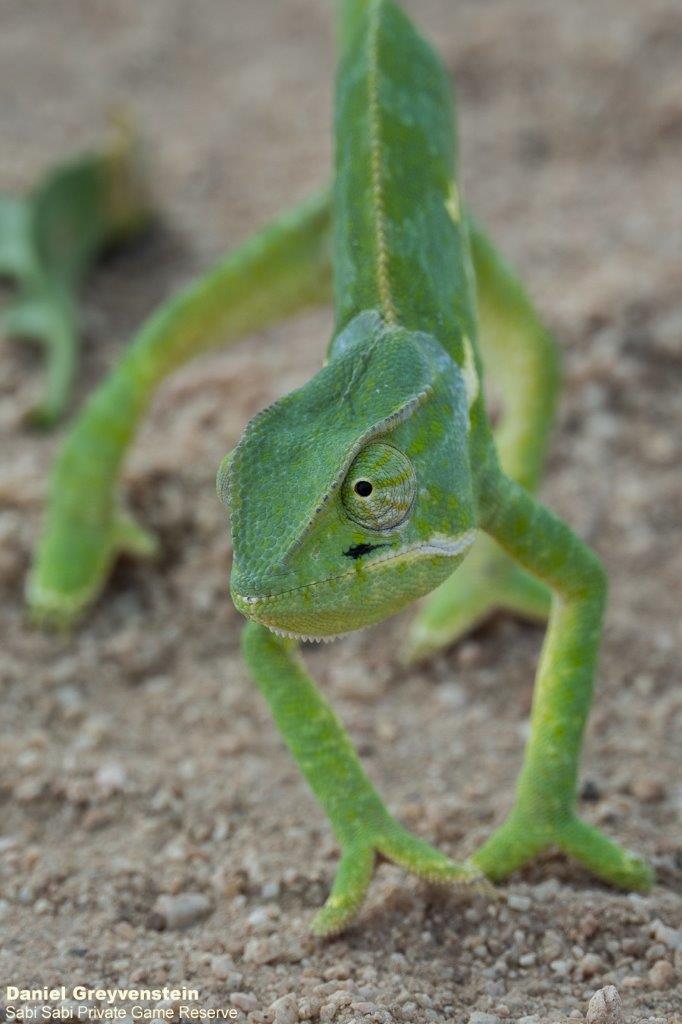
A large male giraffe decided to investigate our safari vehicle providing guests with a wonderful up-close encounter with Africa's gentle giant and a beautiful African sky backdrop!
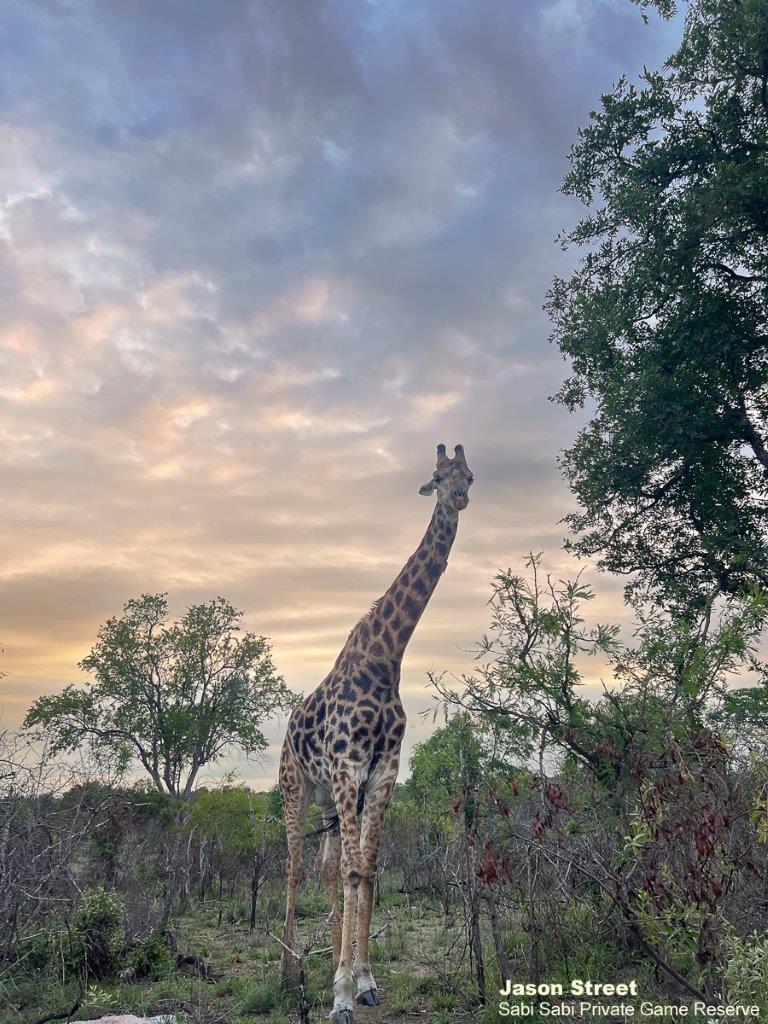
The sun was starting to set, and everyone was getting ready for the night. A big herd of buffalo made their way to a watering hole, cooling off in the cool water after a very hot day. We watched as they rolled around in the water, some fighting for the best spot, and others just enjoying the cool water. Buffalo will drink water daily, sometimes even twice a day. This is because of the course material that they eat. They will move from one watering hole to another, or just stay in an area where they know there is sufficient water for all in the herd.
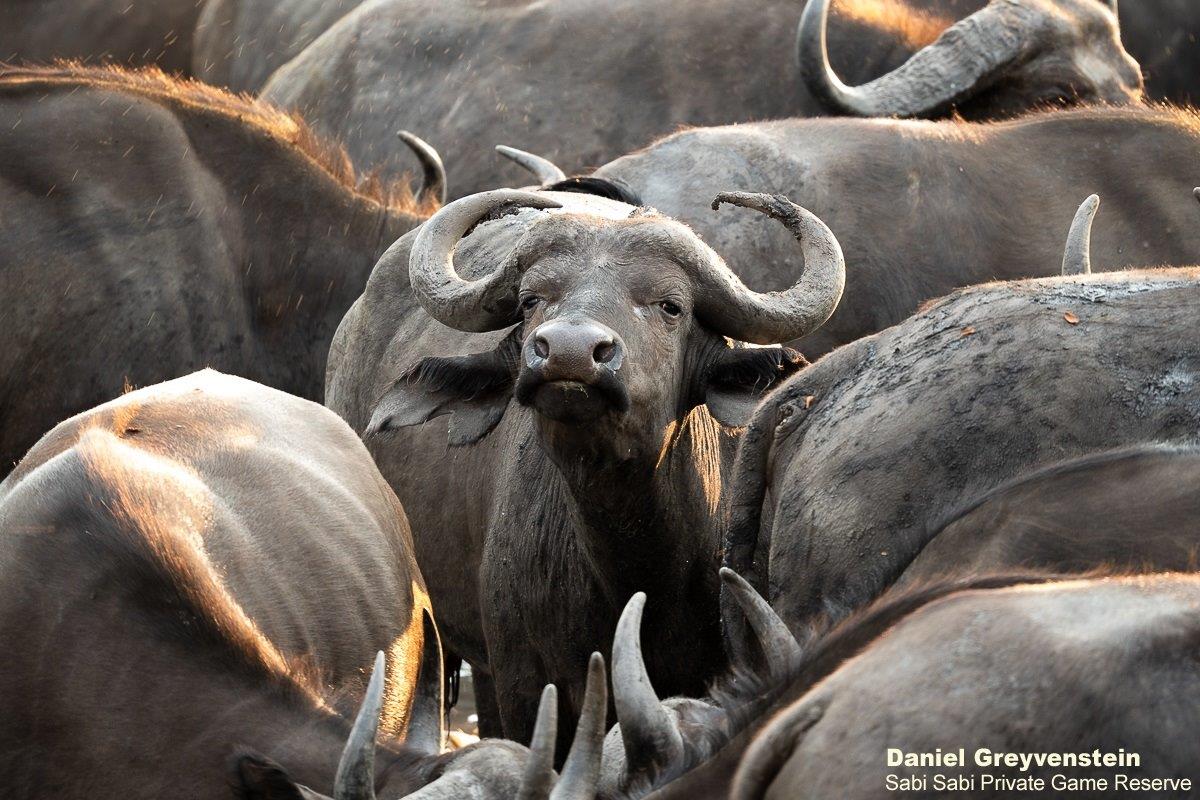
The Rough Scaled Plated Lizard, or also known as the Sudan Plated Lizard, is frequently found in and around hills and termite mounds. They are primarily insectivores, feeding on millipedes as well as fruits and flowers.
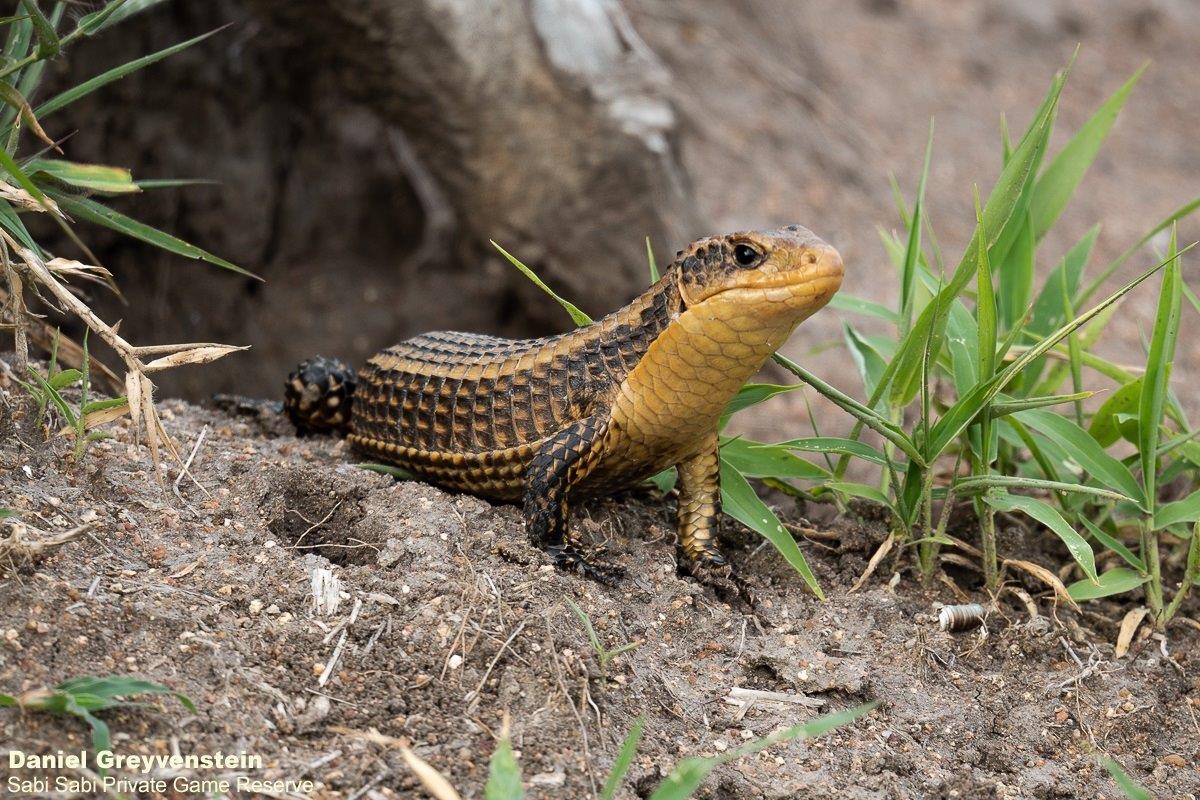
The Black-bellied Korhaan displays, emitting a call as the neck is rapidly raised and lowered in the hope to attract a female for breeding.
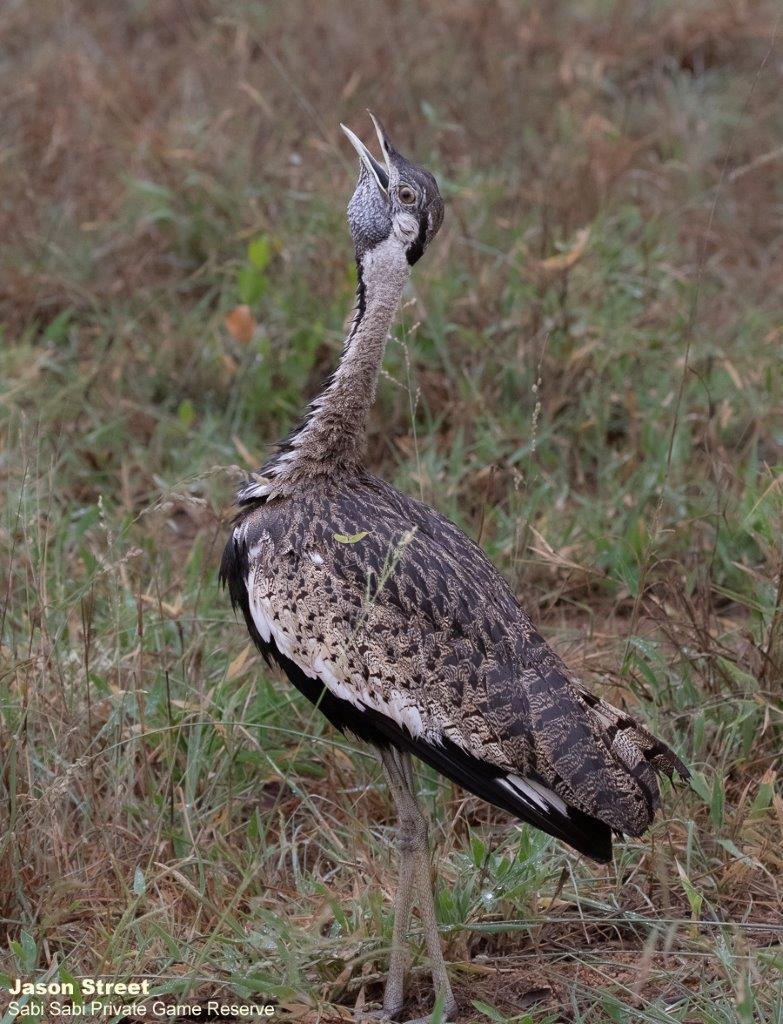
Ending this week’s highlights with a sighting of one of the extremely elusive smaller cats... This Serval was hunting in the grasslands. Servals use their acute sense of hearing to locate prey moving through the grass. On this occasion the Serval stood silently, ears finely tuned in locating a small field mouse. Without warning the Serval pounced into the air landing with its front paws on the unsuspecting field mouse which provided a small but welcome meal.
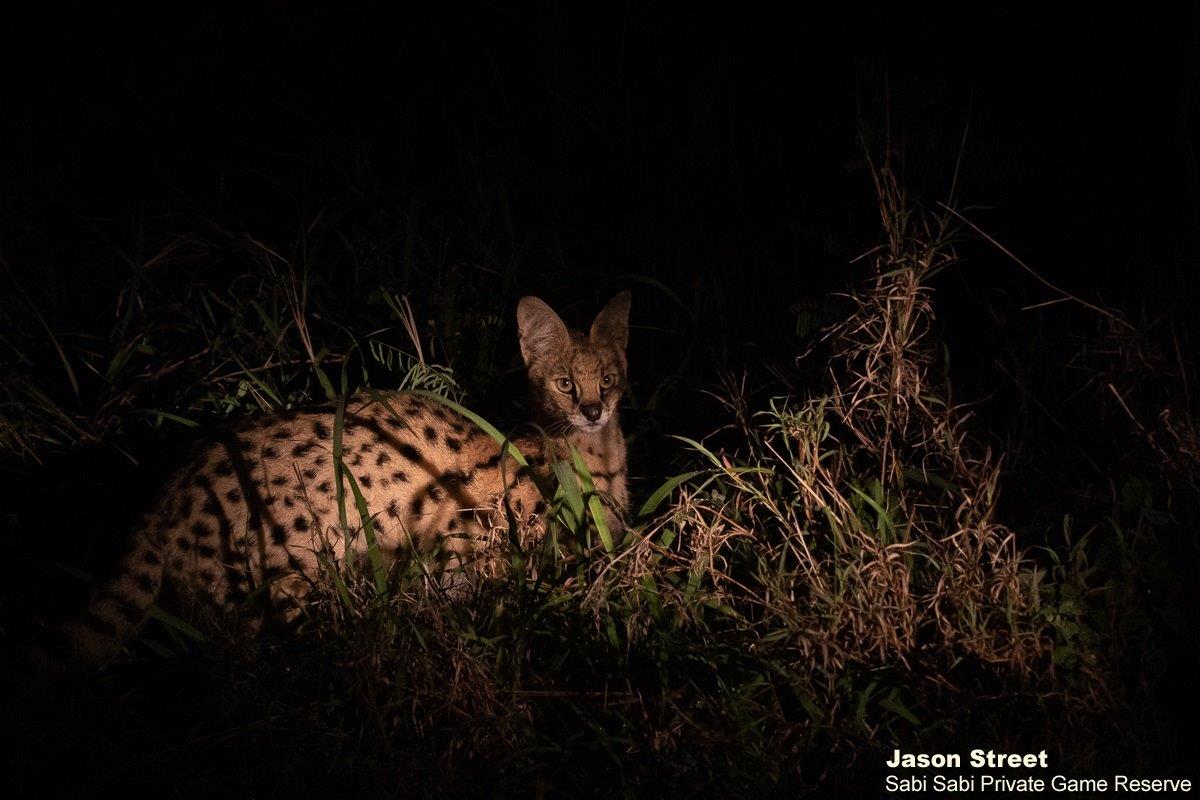
Until next time...






